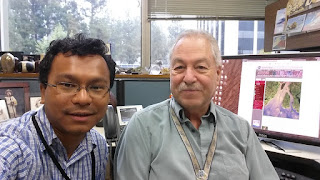Mountains are a part of the global biodiversity repository, play a vital role in maintaining global ecosystems, while supporting millions of people. In the meantime, they are the most vulnerable ecosystems. Changes in the environment and economic priorities in past few decades have considerably influenced the livelihood and sustainability of mountains globally. The effects of changing climate and other socioeconomic factors on mountains can affect the densely populated and underdeveloped regions to an inconceivable scale. It is, therefore, important that we study the impacts of climate change, changes in economic priorities of the mountain residents, and increasing non-conventional values of mountain ecosystems and its inhabitants. Moreover, the factors affecting the sustainable livelihood of mountain inhabitants need to be carefully studied to assess the short and long-term impacts, and to develop a long-term strategy for improving the livelihood of the residents in the face of the changes.
This Special Issue will feature peer-reviewed papers from the international conference on “Mountains in the Changing World (MoChWo)”, to be held in Kathmandu, Nepal, on 1–2 October, 2016 (http://conference.kias.org.np). The conference and the Special Issue aim to provide a forum for international/national scholars, researchers, policy makers, and students with an opportunity to share their research findings and knowledge related to various aspects of mountains.
The range of relevant topics include:
- Environmental, economic and social sustainability
- Land use and land cover monitoring, natural disaster and risk assessment
- Decision making and societal impacts, policy and management strategies for sustainable development
- Citizen science and trainings
- Remote sensing, and mapping of resources
- Data fusion, and data visualization relevant to sustainability issues
- Innovation in renewable and alternative energy
- Pesticide uses and sustainable agriculture
- Organic farming
We welcome papers from broadly defined topics that are relevant to the theme of the Special Issue.
Dr. Nabin K Malakar
Dr. Rajan Ghimire
Dr. Jhalendra Rijal
Dr. Pradeep Wagle
Guest Editors
Dr. Rajan Ghimire
Dr. Jhalendra Rijal
Dr. Pradeep Wagle
Guest Editors











